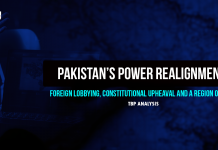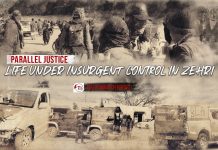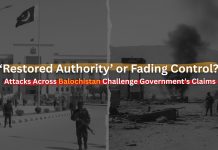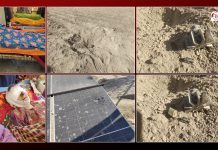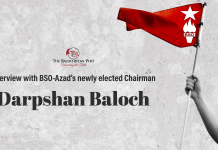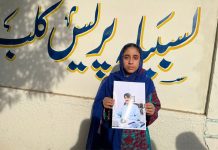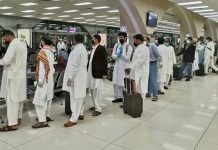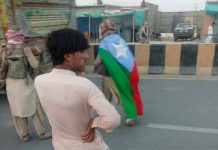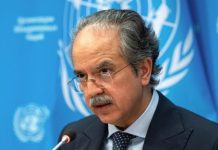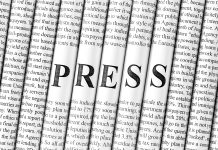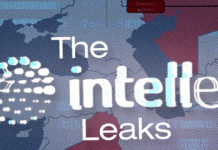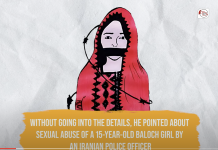Search crews have found no signs of life after locating the wreckage of a helicopter that crashed while carrying Iranian President Ebrahim Raisi and other senior officials, Iranian state media reported on Monday.
The helicopter crashed on Sunday in poor weather near Varzaqan in Iran’s East Azerbaijan province. State media reported that it was transporting President Raisi, Foreign Minister Hossein Amirabdollahian, and two other officials back to Iran from an event in Azerbaijan. They had met with Azerbaijani President Ilham Aliyev to inaugurate a dam project.
The crashed helicopter was one of three returning from the event, where the officials inaugurated the Khoda Afarin and Giz Galasi hydroelectric power plants along the Aras River, which marks the border between Iran and Azerbaijan.
On Sunday night, Iranian state TV showed footage of rescuers navigating through rain and mountainous terrain in darkness to locate the crash site. There was no immediate word on the condition of Raisi or the other officials on board.
Early on Monday, Turkish authorities released drone footage showing what appeared to be a fire in the wilderness, suspected to be the wreckage. The coordinates indicated the fire was about 20 kilometers south of the Azerbaijan-Iran border on a steep mountain.
Later reports confirmed that search crews had identified the crash site. Dense fog and heavy rain were cited as causes of the crash. An Iranian official told a British news agency that the chances of President Raisi’s survival were low, as the helicopter was completely burned.
Raisi, a protege of Iran’s supreme leader Ayatollah Ali Khamenei, was elected in 2021 in the lowest turnout since the founding of the Islamic Republic in 1979. He is known as a hard-liner and formerly led the judiciary.
Iran’s constitution stipulates that if the president dies or is incapacitated, the first vice president, currently Mohammad Mokhber, temporarily assumes the role until a new presidential election is held within 50 days. The president’s role is subordinate to Iran’s supreme leader, who retains ultimate authority.
Earlier on Sunday, Iranian state TV showed government supporters gathering across the country to pray for Raisi’s safe return. State news agency IRNA quoted Khamenei as saying, “The Iranian nation shouldn’t be worried. There will be no disruption to the operations of the country.” IRNA also published a photo showing Vice President Mokhber chairing an emergency cabinet session to address the crash.
In contrast, images posted on social media showed opponents of Iran’s rulers setting off fireworks in multiple locations late Sunday, including southeastern Iran, to celebrate the prospect of Raisi’s death. The contrasting reactions highlight the deep divisions within Iranian society.
Iran has faced years of mass protests against its Shiite theocracy over an ailing economy and human rights issues. In 2022, mass protests erupted after the death of Mahsa Amini, who had been detained for allegedly not wearing a hijab properly. The crackdown that followed killed more than 500 people and saw over 22,000 detained.
Shortly after Mahsa Amini’s death, Iranian security forces killed dozens of Baloch in the southeastern province of Sistan-Balochistan when they opened fire on a protest in the city of Zahedan. Activists charge that the Baloch in southeastern Iran have long faced discrimination by the country’s Shiite clerical leadership, leading to growing resistance against the regime.

